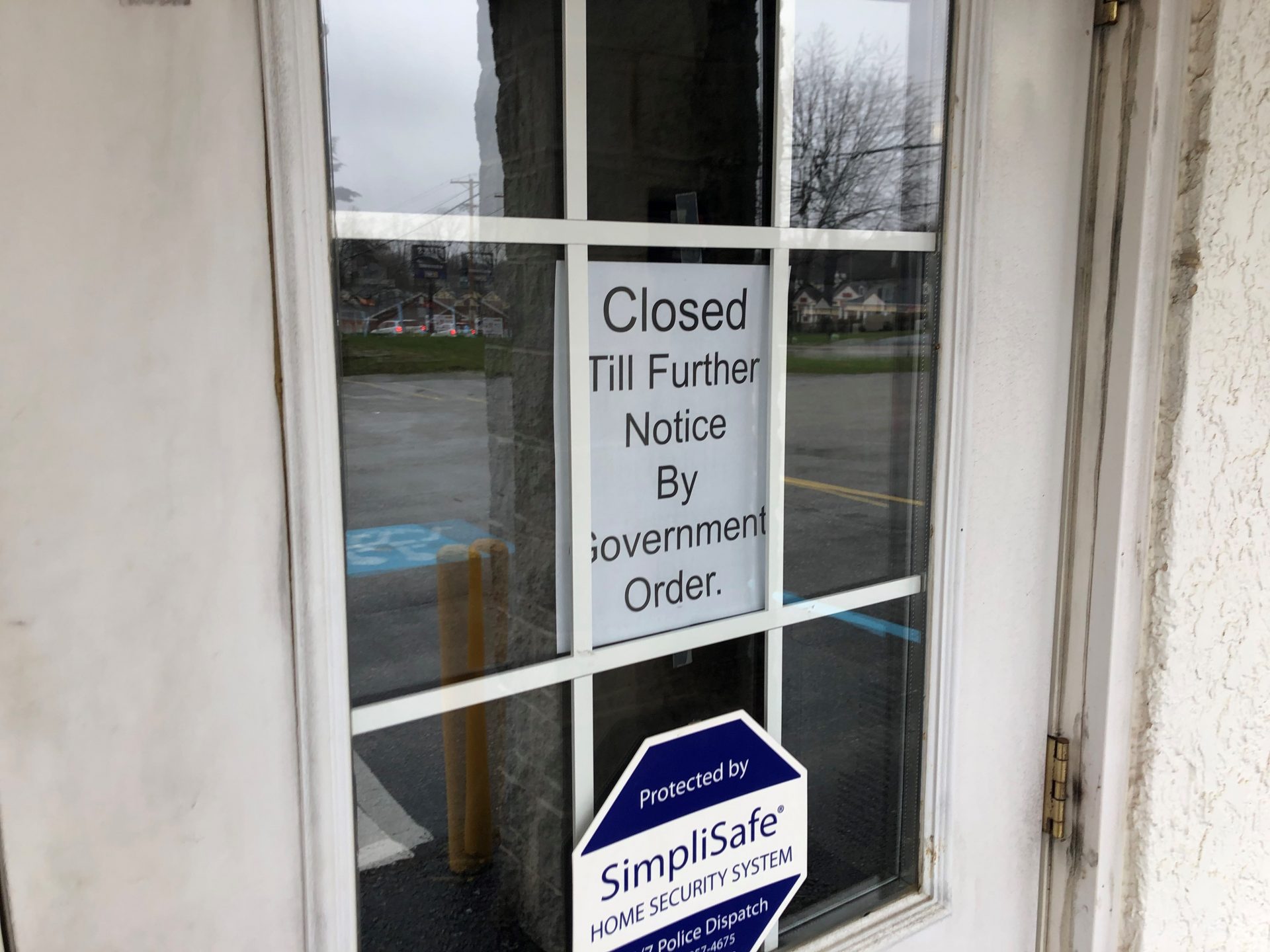
Heather Khalifa / Philadelphia Inquirer
State officials are likely to follow the example of other states that have taken significant steps.
Wallace McKelvey/PennLive
This story was produced as part of a joint effort among Spotlight PA, LNP Media Group, PennLive, PA Post, and WITF to cover how Pennsylvania state government is responding to the coronavirus.
HARRISBURG — With the number of coronavirus cases in Pennsylvania projected to rise sharply in the coming weeks, state officials are looking at all possible solutions to an expected shortage of hospital beds, including making use of hotels and convention centers.
Medical facilities statewide reported about 3,400 intensive care beds at last count. But a recent Harvard Global Health Institute study found the state would need from 2.5 to 7 times that number depending on how effective social distancing efforts are in avoiding a spike in patients.
“There’s a substantial likelihood we are going to see a surge that might reflect the worst-case scenario,” said Jeremy Kahn, a professor of critical care medicine and health policy at the University of Pittsburgh. “I’d be hard-pressed to think of anything as too extreme.”
State officials have repeatedly declined to detail exactly what their planning entails, but they are likely to follow the example of other states that have taken significant steps.
In New York, now the epicenter of the coronavirus outbreak in the United States, officials are transforming the massive Jacob Javits Center to accommodate nearly 2,000 hospital beds. Gov. Larry Hogan of Maryland, which has reported less than half of Pennsylvania’s number of confirmed cases, announced plans Monday to convert the Baltimore Convention Center and a nearby Hilton Hotel into field hospitals to add an additional 900 beds.
Kahn, a practicing doctor in the intensive care unit at UPMC Magee-Womens Hospital in Pittsburgh, said transforming these kinds of spaces into field hospitals is challenging.
Even rudimentary hospital rooms are usually equipped with oxygen, suction, lighting, and telemonitoring equipment to track a patient’s blood pressure and heart rate. All of that requires a stable electricity supply that may be difficult to add to a building not designed for it.
“Frankly, I’m a little skeptical this is the most efficient solution to meet the demand for this influx of patients,” he said.
The more likely solution, Kahn said, is that these makeshift hospitals would be used to care for less severe cases or those who are recovering and no longer need intensive care.
When asked about the possible bed shortage Wednesday, Pennsylvania Health Secretary Rachel Levine said, “We might use hotels or other spaces to have people convalesce with limited medical care that they might need.”
The best course the state could take, Kahn said, would be to move less severe cases to another facility before putting critically ill patients “in an ad-hoc ICU at a dorm or hotel.”
This would, in essence, require authorities to shift patients “downstream.” As patients with COVID-19 begin flooding the ICU, he said, less severe patients could be moved to other wards in the same hospital, while patients from those wards could move to skilled nursing homes and the patients from those nursing homes could move into the new makeshift hospitals in places like college dormitories, convention centers, and hotels.
John Longstreet, president of the Pennsylvania Restaurant and Lodging Association, said a number of hotels have volunteered their facilities through the Pennsylvania Emergency Management Agency’s sheltering task force. The coronavirus rendered most of them vacant, he said.
“It’s much more like a war setting than anything I’ve ever experienced,” said Longstreet, who’s been in the hotel business for five decades. “But I want to clarify: The hotels are not being commandeered. They’re willingly entering into relationships to help.”
PEMA spokesperson Ruth Miller said there are no plans to force hotels to serve as hospital space, noting “there are private sector partners that are volunteering space and resources.” As of Wednesday, the agency didn’t yet have details on how it would pay for such a move.
Lt. Gen. Todd Semonite, commanding general of the U.S. Army Corps of Engineers, announced a $1 million plan, funded by the Federal Emergency Management Agency, to convert some 10,000 rooms in hotels and college dormitories into hospital space to treat COVID-19 patients in New York City. The agency was looking at similar operations in California, New Jersey, and Washington state.
Semonite said such facilities would have to be sanitized and retrofitted in order to keep individual patients in isolation, according to a report by McClatchy. COVID-19 patients would also have to be separated from other ICU patients.
That involves using a hotel room’s air conditioning unit to create a “negative pressure room,” Semonite said, creating a vacuum that isolates that patient’s space from the rest of the facility.
The last step, he said, is “a big piece of plastic with a zipper on it” over the door. (Think the isolation units in Hollywood films like E.T. the Extra-Terrestrial or Outbreak.)
Just a few weeks ago, Heidi Howard coordinated events and meetings for the lodging association in Pennsylvania. That work evaporated with the spread of the coronavirus, and instead the trade group was asked by the Wolf administration to help with emergency preparations.
Howard’s job now includes passing along information about hotels willing to serve as field hospitals.
“This is just preparation at the moment,” she said. “But it’s important to have this information so they can act on it quickly if they need to.”
Messages left at several of the hotels that have volunteered were not returned as of Wednesday, but one of them, the Holiday Inn Express in Center City Philadelphia, was announced as a quarantine site for homeless people who test positive for COVID-19. That project, which would set aside 100 beds, was coordinated through the city rather than the state.
There aren’t many recent precedents for the efforts being undertaken today.
The military commandeered resort hotels in places like Atlantic City to treat soldiers returning from World War II. During the last major pandemic, the Spanish influenza outbreak of 1918, triage centers were set up in auditoriums, gyms, and hotels across the country. Ice rinks and warehouses became makeshift morgues.
Longstreet said hotels today feel a bit like they did in the weeks after the September 11 terrorist attacks, when air traffic was grounded, leaving hundreds of thousands of travelers stranded. Demand for hotel space was initially high, then it cratered and slowly returned.
Hotels averaged about 65% occupancy before the coronavirus outbreak are now reporting 10% or less, he said. They generally need about 50% occupancy to break even.
Converting hotels into hospital space, Longstreet said, “would be a win-win situation because we can help and, secondly, there’s some relief for the workers who may not have anything to do otherwise.”
Spotlight PA provides its journalism at no cost to newsrooms across the state as a public good to keep our communities informed and thriving.




